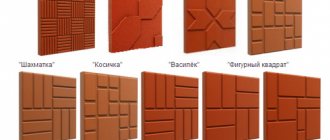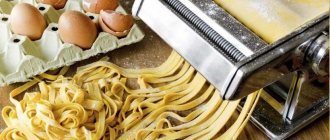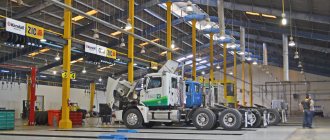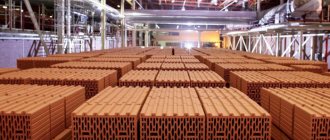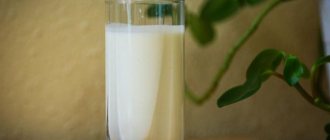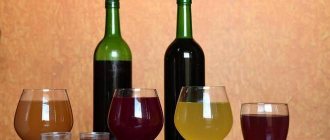The level of use of plastic products in everyday life and industry tends to grow rapidly. This is justified by the simplicity of the manufacturing mechanism made of plastic and the low cost of structures in comparison with their counterparts made of other materials.
In this regard, this market niche is gradually being filled by large and small manufacturers using individual strategies for the production and marketing of products. A responsible approach of entrepreneurs to the selection of production equipment, personnel selection and the use of high-quality raw materials will allow them to achieve high financial results from their activities.
Production technologies
Plastic is a universal material that is widely used in the manufacturing of products used in everyday life and industrial applications. The basis of plastic is synthetic and natural polymers.
There are various technologies for the production of plastic products. These include:
- casting (converting raw materials into a liquid state and then pouring them into special molds);
- blowing (giving shape to liquid plastic by supplying air into a closed container in which it is located);
- vacuum forming (exposing sheet materials to air pressure);
- extrusion (pushing molten plastic through a molding head).
The casting method used by many small businesses involves pouring polymer into silicone and metal molds.
Silicone molds are made within 24 hours based on master models created in advance.
The disadvantages of this production technology include:
- low productivity (due to the long hardening time of the plastic);
- low limit for using the form (from 10 to 20 times);
- limitation of product thickness (from 0.1 mm);
- impossibility of using the method for the production of large-sized products.
The use of metal casting technology, along with a high level of productivity, has disadvantages associated with the high cost of the structure and the long production time.
A relatively new technology for manufacturing plastic products is the 3D printing method, which makes it possible to achieve high precision of the designed products. Its disadvantage is the low level of productivity. Printing complex, three-dimensional structures in this case is difficult, which is explained by the limited size of the printer.
Production of plastic products as a business idea
One of the main advantages of plastic and products made from it is its low cost. But other properties of the material are quite attractive:
- plastic is light and at the same time durable;
- malleable in processing and resistant to corrosion and acidic environments;
- shockproof and frost-resistant;
- does not conduct electricity and has low thermal conductivity;
- can withstand heavy mechanical loads and has a high noise insulation coefficient.
And what is also important is that plastic can be recycled many times, resulting in new products.
This suggests that plastic recycling can be considered as an independent and/or additional to the main direction of business development. Moreover, recycling is a production that solves the problem of recycling difficult-to-decompose waste, which means that by developing this area, you can receive government support.
In Russia, most plastic products are supplied from Europe (the quality of the material is excellent, but prices are high) and China (cheaper and lower quality products).
The most famous Russian manufacturers of household plastic are the companies Polimerbyt, Bytplast, etc.; toys - Nordplast, Stellar. Toys from the Belarusian company Polesie are popular among Russians.
In total, there are approximately 1,500 large and 2,500 medium and small enterprises producing plastic products in Russia. Plastic products are used almost everywhere. In particular, in the following industries:
- construction and water supply;
- furniture and woodworking industry;
- automotive and aviation;
- shipbuilding and instrument making;
- household appliances and electronics;
- computer and office equipment;
- Agriculture;
- transport and communications;
- rocket and space technology;
- defense industry;
- medical industry;
- containers and packaging;
- urban and suburban life;
- and many many others.
It is not surprising that the demand for this type of product remains at a high level. There are also unoccupied niches in the production of plastic products - for example, the production of large-sized children's toys. They are produced in large quantities in Europe, but their delivery to Russia is very expensive, which is not profitable for manufacturers. And this type of product is in great demand in kindergartens, developmental, entertainment and cultural and leisure centers.
First of all, it is important to decide on the product range.
Documents for registration and taxes
Focusing on the scale of the planned production, it is necessary to decide on the choice of organizational and legal form. For small businesses, it is recommended to open a sole proprietorship. For larger ones - LLC.
The documents required to open an individual entrepreneur include:
- Passport.
- Application for state registration in form P22001.
- Receipt for payment of state duty.
- A copy of the IIN certificate.
To conduct business as an individual entrepreneur, a rational option is to choose the simplified tax system (simplified taxation system). It involves using as a tax base:
- income from business activities (tax is withheld at 6%);
- net profit (tax is withheld at 15%).
An entrepreneur has the right to change the base for calculating tax once a year.
When registering an LLC, you must provide the following documents to the tax service:
- application for registration in form P11001;
- LLC charter;
- decision to create an LLC;
- letter of guarantee to provide the legal address of the future organization;
- receipt of payment of state duty;
- notification of transfer to the simplified tax system.
For an LLC (in simplified terms), the same principle of paying taxes applies as for an individual entrepreneur.
Production of plastic containers
Currently, plastic buckets are used in almost all areas of human activity. Due to the fact that they are light and airtight, they can be used as storage space, as well as for transporting a variety of products, both food and industrial. Also, plastic buckets are durable, highly resistant to impacts, etc.
Generally speaking, plastic containers are considered environmentally friendly. It is unable to have any negative effect on either the taste buds or the smell of the products stored in it. Today, those buckets with a volume of up to 30 liters are especially popular. The shape of such containers is usually round with smooth lines.
However, there are also rectangular models. In order to start your activity, you need to register it. The most optimal form is an LLC, since you will have to cooperate to a greater extent with legal entities - with a variety of stores.
Purchase of equipment and raw materials
The purchase of equipment is the main expense item for the newly opened production. A responsible approach to the selection of purchased machines will avoid additional costs for their repair and will significantly reduce the rate of defective products.
Plants used for the production of plastic products include:
- Extrusion blow molding equipment. It is used to produce thin-walled, hollow plastic structures.
- Automatic thermostat. This unit is used to heat plastic in order to turn it into a liquid state (and then pour it into molds).
You may like: How to do dropshipping: pros and cons
To minimize manual labor costs, preference should be given to electronically controlled models. Their only drawback is their higher price compared to mechanical devices.
Hydraulic press for plastic: the device is designed for molding products from thermosets.
Thermostat: designed to maintain the required temperature of the fluid supplied to heat or cool the mold.
Chiller for cooling water: helps reduce the temperature of the water supplied to cool the machines.
One of the main components of effective business is the use of high-quality raw materials.
Depending on the processing technology used, the necessary polymers are purchased. They are divided into the following types:
- Thermoplastic (polystyrene, polyethylene). This type of polymer has the ability to harden and soften many times under the influence of appropriate temperatures.
- Thermosetting (urea and phenol-formaldehyde polymers). This type responds well to temperatures, but hardens only once.
Equipment for the production of plastic products
The composition of the equipment depends on the range of products manufactured, the scale of the business, and the technologies used. An entrepreneur can purchase both individual machines and entire automatic lines.
Main equipment used for making plastic products:
- extruders;
- injection molding machines;
- blow molding machines - devices for producing hollow containers;
- extrusion blow molding machines - devices that allow the production of PET containers and plastic products;
- thermoforming machines.
Optional equipment:
- loaders and conveyors;
- dryers and mixers;
- crushers and conveyors;
- Press forms;
- refrigerators.
Equipment costs can amount to 2-5 million rubles.
Recruitment
Organizing your own production of plastic products requires the involvement of the following specialists:
- Production preparation engineer. The responsibilities of this specialist include: organizing production processes, developing design documentation, drawing up plans for the introduction of new technologies into the production process.
- Purchasing Manager. This specialist is involved in drawing up estimates for the purchase of polymers and searching for suppliers of raw materials.
- Accountant. His responsibilities include: accounting, document management, preparation and submission of accounting and tax reporting to regulatory authorities.
- HR specialist. This specialist keeps records of the personnel of the enterprise, prepares documentation for the hiring, transfer, and dismissal of employees.
- Production worker.
- Cleaner of industrial premises.
- Watchman.
Creation of the final product form
The molten mass is transferred into a special mold through a hole. Subsequently, a specific bucket shape will be formed. All this happens under quite a lot of pressure. When cooled, the bucket already takes on its final form.
Then the manufacturer will only need to attach the handles, which can be made from either plastic or metal. Everything will depend on the specific type of bucket and on what purposes it is planned to be used for. You can also create a cover with something on it.
Initial investment and profit
Drawing up a plan for income and expenses at the initial stage of project implementation will allow you to achieve good financial results.
The start-up capital required to organize the production of plastics includes the following expense items:
- expenses for obtaining a fire safety certificate, conclusion of the SES, registration of an individual entrepreneur (LLC) - 40-50 thousand rubles;
- expenses associated with finishing the production premises (200 thousand rubles or more, depending on the size of production);
- costs for the purchase of equipment and raw materials (3 million rubles or more, depending on the scale of the production process);
- costs for developing a logo, advertising (200 thousand rubles).
The total start-up investment for a small production of plastic products will be 3,440,000 rubles.
Assuming that the average price per unit of production is 300 rubles, and monthly sales are 2,000 units, the income from the production process will be 600,000 rubles. To determine profit, from this amount it is necessary to subtract the amount of starting investments and monthly expenses (salaries for employees, rent of premises, payment of taxes, logistics costs, purchase of raw materials).
What do you need to know about the technological process?
At the initial stage, you will need raw materials, which are in the form of granules, to be poured into a special container. Subsequently, when exposed to high temperatures, it melts. The dye required for production is added to the same container.
The bucket machine then begins to shape the product itself. This happens through high pressure casting. Through the use of molds, the physical parameters that the models will have are achieved: thickness, height, diameter. The form can be divided into several categories.
- Cold duct.
- Hot runner.
- Combining.
However, the first type of form has a particular advantage. Its popularity is primarily due to the low cost that will characterize the production of plastic buckets.
Requirements for the quality of finished products
The enterprise must carry out quality control of products, in particular their appearance. The surface of the buckets should be smooth, without swelling or cracks.
Since the molding method is used in production, it is necessary to ensure that the mark - the protrusion or depth from the molding tool - does not exceed 0.5 mm-2 mm (the upper limit concerns large buckets).
The main value of plastic products is their resistance to temperature, moisture and other adverse factors. Buckets are no exception. According to GOST, containers must be tested for temperature resistance. To do this, the bucket is immersed in hot water. If the container will come into contact with food, the temperature of the liquid should reach 70-75°C, and for technical use - 60-65°C. If the container is large, to check it, fill it with water at a temperature of 50-55 ° C to 50% of the total capacity. After 10-15 minutes, the test result is assessed. The following is considered satisfactory:
- no changes on the surface of the bucket;
- clear water (without coloring) after contact with the product.
To assess the quality of dyeing, the container is wiped five times with a cotton cloth of a contrasting color.
Whether the product is resistant to aggressive chemical environments is checked with a solution of acetic acid (1%) brought to a temperature of about 65°C.
The container is also exposed to a soap-alkaline solution (2%). Large buckets are not completely immersed in solutions, but individual samples of material are cut out for testing; their size is from 7x7 cm.
One of the quality indicators is resistance to pollution. To test, a contaminant is applied to a sample of the material. If the bucket is intended for food, the plastic is stained with grease; Products for garden work are tested by the ground. After 3 hours, the result is assessed. If everything went well, the quality meets the standards.
The strength of the bucket handles is of great importance. To check the bucket for 5 minutes. suspended with a load twice its capacity.
Products that have successfully passed the test may be approved for use by the end consumer.
Types of plastic buckets and features
In the store you can find plastic buckets of different colors, differing in shape, size, texture, and different resistance to deformation or contamination. According to GOST, all of them belong to household products (GOST R 50962-96).
There is a generally accepted classification of plastic buckets:
- Auxiliary containers for storing and carrying products. In this group, buckets are presented as containers for cold drinking water.
- Products intended for sanitary and hygienic needs (trash can).
- Products necessary for work in the garden and vegetable garden.
The production technology of plastic buckets allows us to produce products ranging in size from 0.4 to 30 liters. Buckets are considered the most popular in everyday life:
- For 10 l. More often they are used for collecting garbage, cleaning premises, and carrying out work on a personal plot.
- From 0.5 l, made of food-grade plastic. Small transparent buckets with an airtight lid are often used as containers for long-term storage of canned foods.
When manufacturing products, it is necessary to comply with the requirements of the GOST standard or technical document, developed drawings. The regulatory documents indicate the material used and the list of dyes used.
The fact of the use of production waste must be reflected in the technical documentation, since their use is unacceptable in the manufacture of containers for food and products for children. Products made from recycled materials must be marked accordingly:
If the product can come into contact with food, it is marked with the symbol:
If the bucket is made from a material that cannot be used for food, but its shape and size allow this, the manufacturer has the right to leave a label specifically indicating the features of the product, for example, “Not for food” or “For technical use.”
Note! Plastic buckets are sometimes called "plastic" buckets. In essence, they are the same thing, but plastic means a more durable, durable product. Indeed, thanks to fillers, stabilizers and hardeners, plastic does not scratch and breaks only with great force (for example, a plastic window). Simple plastics are more unstable to influences. A striking example is polyethylene, synthesized by polymerization of ethylene.
Visually, plastic and resin buckets are different. The former look more durable, are heavier in weight, and their cost is higher than their plastic counterparts.
Regardless of the purpose and type of raw material, the method of producing plastic buckets is the same.
Marketing and sales channels
The main goal of marketing is to stimulate demand for manufactured products - that is, plastic buckets. There are several methods for this, two of which can be applied to promoting plastic buckets on the market:
- advertising as a means of promoting a product: billboards, exhibitions and sales, advertisements in the media and on the company website;
- Sales promotion is carried out in two ways: stimulating buyers (seasonal discounts, sales) to purchase goods and stimulating trade.
We recommend reading:
- how to organize a polyethylene production plant
- foam production
- foam production business plan
- production of plastic pipes
- polypropylene bag manufacturing business
Organization of product sales
Finding sales channels for plastic buckets is not difficult. A large segment of consumers of these products is found in various types of food industry, for example, in the fishing industry. Buckets with lids are practically the main container for salted fish. Buckets are readily purchased for transporting paint and varnish products, in confectionery production and meat processing.
